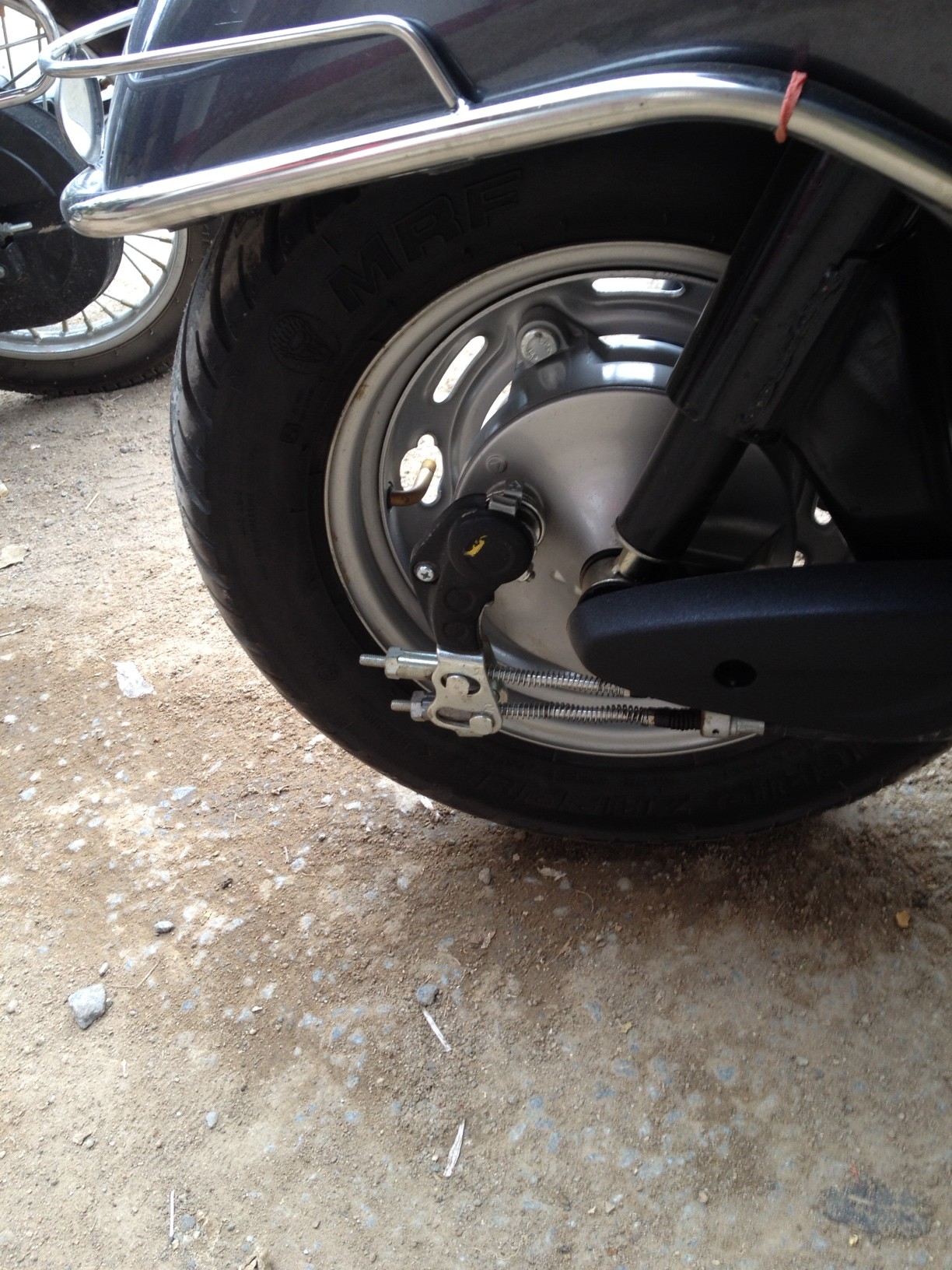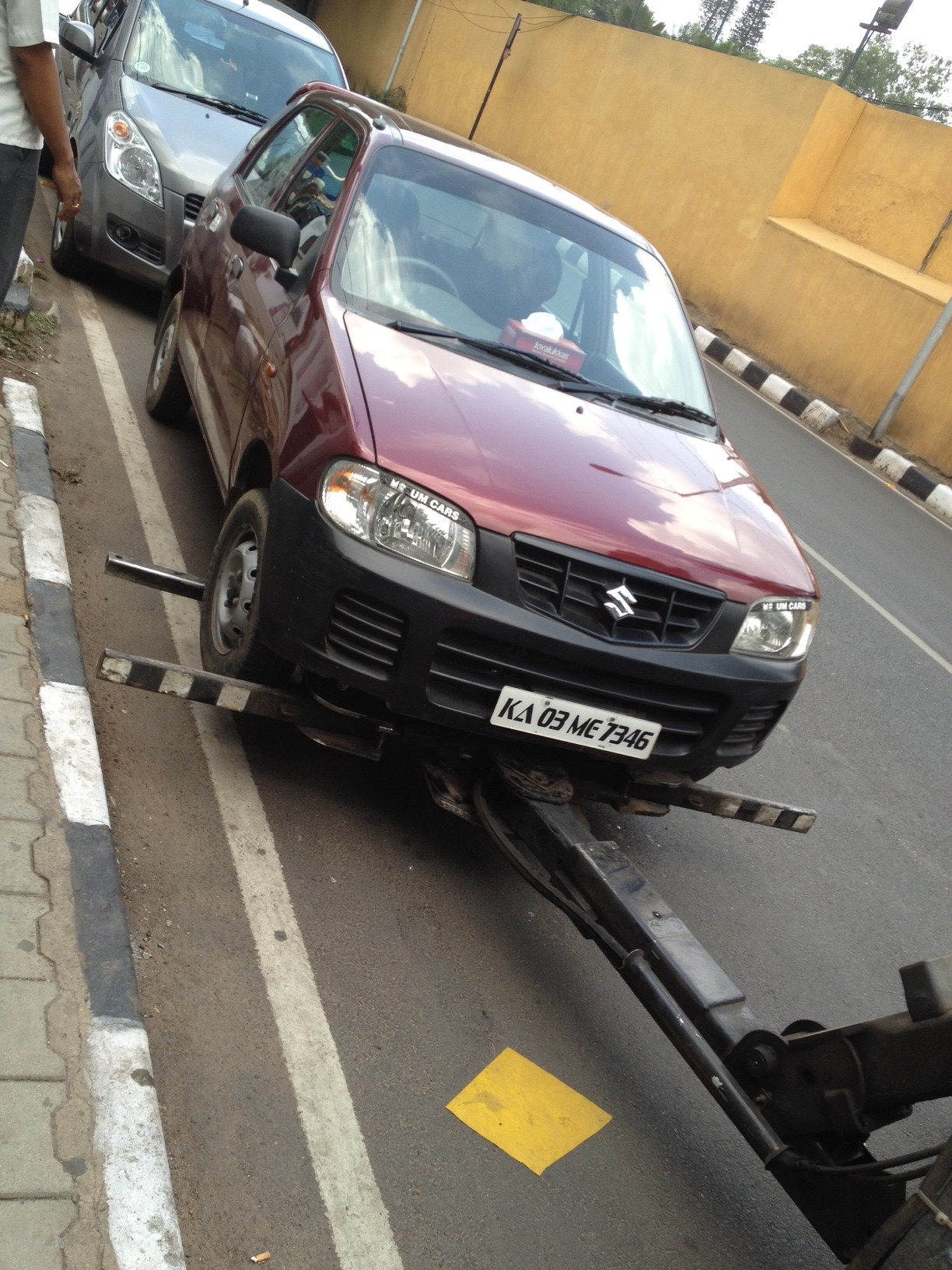A new experience on my bike. I’ve been to touring-style CAM rides, random commutes, but a timed, marathon-like populaire was a first.
Populaires seem to be a starter course to their longer versions called the brevets — which are timed, marathon-like rides starting at 200km. The time-limit for a brevet is based on a simple formula which assumes the rider to be able to maintain a 15km/h average speed for the entire distance. Populaires organised by the IISc randonneures group are of 55, 100 and 150km.
I woke up at 4AM yesterday and was ready to leave by 0430 to reach the IISc gymkhana gate which is approximately 17km from my home. We were expected to be there by 0530 in order to start off at 0600 for the populaire. The previous day I had commuted to work just to make sure my cycle and I were in a state fit for this populaire. Instead of riding to the start point, I decided to put the bike into my car and drive instead. Wasn’t sure about the route and the time it’d take and not to mention, the dogs. Had I company, I would’ve chosen to ride along as a group.
I was handed a populaire card where the details of the check-points and timings had to be written. A stamp would be pressed and actual arrival times would be written at adjacent boxes when one reaches the checkpoints in the “PLACE” column below.

More details (the route-map, the cue-sheet, etc.) are located here.
I started off on time and tried to keep up the folks in front of me until the first check-point. A few roadies who were ahead of me (and the one that went past me in the initial 5 minutes) were nowhere to be spotted hereafter. I noticed in the checkpoint official’s record sheet that some had reached that place at least half an hour before the three-person group I was closely following as to not loose sight of them.
I didn’t have a printed cue-sheet but I had a copy open in my phone’s browser. The populaire website warned that the route-map is not “official”. And best of all, we weren’t on city roads at all for the bulk of the ride and trying to look for landmarks was pointless.
We went past a lot of government research institutes that researched on poultry of various kind: emus, ostriches; and even frozen semen. There was a research institute for poultry feed too. A younger co-rider who was on a BSA mach flatbar roadie showed me an ostrich in one of these compounds.
The route was very scenic. Flowers on the trees of various colours, grasslands, comfortable weather (I guess this is largely owing to the fact that were riding these stretches between 0600 and 0800 when the sun isn’t fierce.) This wasn’t a tour but a timed-marathon. I saw nobody stop to take a break of more than a few minutes. And breaks weren’t taken in locations that were photogenic. So the best I could capture was when I got a chance to slow down because of the terrain while still trying to keep a group of cyclists in sight in front of me whom I was relying on to know the routes.




I had lost track of the people in front of me after the 40km mark when I entered some controlled farmlands which had fields of various kinds of vegetables growing in them. Luckily, I found the 3rd checkpoint, got the stamp and moved on. But at the fork, I took the wrong turn and lost quite a bit of time before I got on track to head to the end. I think I realise the importance of being fit enough to keep with those who have a clue or be lost with at least a company.
Loaded my bike back into my car and left the gates of IISc gymkhana by 1010. Took me close to an hour and forty-five minutes to reach home cruising through the traffic as if I was carrying a heavy load. My bum was sore and I couldn’t sit still in the car. After I got back home, I took a good shower and headed to the nearby Cafe for a brunch and finished up Edgar Burrough’s “A Princess of Mars”.
I have a feeling that I’m going to be doing more of these. There’s something about this brevet-style of riding when compared to a relaxed trek. There are 100 and 150km populaires in the coming months. If I conquer those, I’ll definitely be eyeing the brevet. Hopefully, I should have a roadie with me by then.

